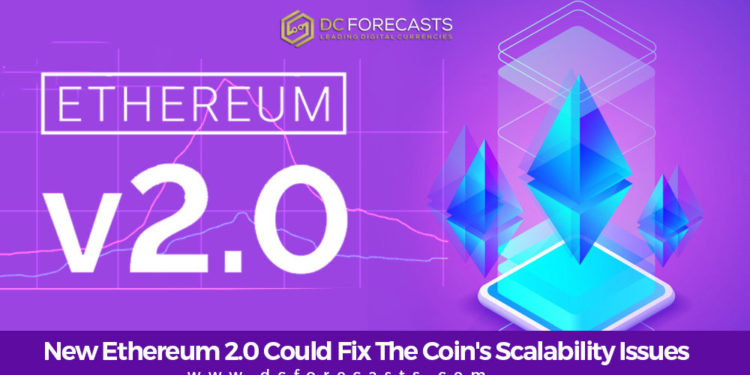The ETH news today show that according to ETH analysts, the imminent launch of the new Ethereum 2.0 could fix the scalability issues. However, many investors speculate that this could lead to negative annual issuance. The blockchain’s transition to a Proof-of-Stake (PoS) consensus system will also help attract investors because of its staking incentives.
Aside from this, we can see that the blockchain will help the cryptocurrency by fixing its scalability issues which have been a plague throughout the past few years. If this happens, ETH could continue sustaining its massive utility growth rate.
Analysts in the crypto news are now noting that the fee burn in the new Ethereum 2.0 could also lead the cryptocurrency to see some negative annual issuance – which could be a bullish sign for its underlying token fundamentals. Anyways, the good news is that ETH analysts are now taking notice of this possibility.
As you may know if you read our ETH news, the founder of the coin Vitalik Buterin has previously sent mixed signals on whether or not the new Ethereum will be launched in July. Even though he was noted that he does not expect it to face any unexpected roadblocks, putting it on-track to be launched at some point in Q3 of 2020.
Among the many different things, one of the factors that is expected to help drive investors to ETH is its new staking mechanism which would allow individuals to run network validator nodes as a swap for staking rewards.
The new Ethereum 2.0 is also anticipated to significantly reduce the annual issuance. According to some market participants, this rate could eventually go negative.
Over the past week, the Ethereum network has generated ~1900 ETH in fees a day, or ~700k ETH annualized.
At 10mn ETH staked in PoS, the network will produce ~575k ETH a year.
With fee burn in eth2, it's very likely that we will eventually get to negative annual issuance.
— eric.eth (@econoar) May 20, 2020
David Hoffman, however, said that he is not convinced that this will happen with the new Ethereum 2.0. He explained that “more ETH burn should increase the ETH staking returns” which basically means increasing its issuance.
I’m actually less convinced of going negative.
More ETH burn should increase ETH staking returns. More ETH staking increases issuance. I don’t know where the equilibrium sets but I’m not convinced that it’s at a negative number
— DavidHoffman.eth 🏴 (@TrustlessState) May 21, 2020
So, if the new Ethereum 2.0 and its annual issuance does go negative, it would make the coin a deflationary asset. Traders are taking notice of this and the number of Ethereum long positions on Bitfinex have rocketed in recent times.
One trader noted that “2.2% of all ETH in existence is now margin long on Bitfinex” which amounts to a “160% increase since February.”
What. Is. Happening.
2.2% of all $ETH in existence is now margin long on @bitfinex, an increase of ~160% since February. pic.twitter.com/tIyVdxSMca
— Jonny Moe (@JonnyMoeTrades) May 20, 2020
DC Forecasts is a leader in many crypto news categories, striving for the highest journalistic standards and abiding by a strict set of editorial policies. If you are interested to offer your expertise or contribute to our news website, feel free to contact us at editor@dcforecasts.com























Discussion about this post